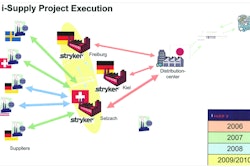While much attention is being paid to China’s rising labor costs recently, wages are climbing at above-average rates in most emerging Asian markets as demand for labor accelerates. Businesses across the region face tough decisions as they struggle to pay workers higher wages while competing for skilled workers.
In 2000, the average Chinese manufacturing wage was 2.5 percent of the average U.S. wage. Currently, that ratio is 10 percent and will approach 25 percent by 2023, according to IHS. At US$3.50 per hour, Chinese wages remain relatively low, but their growth changed the cost calculation for many companies manufacturing, outsourcing or sourcing their goods in China. Global companies looking to mitigate these rising labor costs are turning to Thailand, Vietnam, Indonesia, India and the Philippines. But higher minimum wages, limited skilled availability and strong labor demand are pushing these countries’ wages higher, decreasing their cost advantages over China.
Moreover, many Asian countries raised minimum wages recently. In 2013, Indonesia instituted a 40 percent minimum wage increase in Jakarta and surrounding areas; Malaysia implemented its first-ever minimum standards; and Thailand set a national minimum wage of 300 baht per day or about US$9.20.
Adding to the concerns of employers in emerging Asia is their difficulty in filling skilled and professional positions, owing to the lack of access to quality educational resources. While education is improving in the region, tertiary enrollment rates still fall well shy of those in the developed world. The result is lower productivity, reduced competitiveness and staff turnover.
Over the past decade, manufacturing output more than doubled in most Association of Southeast Asian Nations (ASEAN) economies, further straining the labor force and fueling wage growth. The Chinese manufacturing sector is now over seven times larger than in 2000 and represents over 40 percent of its economy.
Since its 2007 World Trade Organization (WTO) accession, Vietnam’s manufacturing sector quadrupled and now comprises 24 percent of its economy. Looking ahead, Asia (excluding Japan) is expected to overtake North America as the largest region, as measured by real gross domestic product (GDP), within five years. The region’s growth rates will outpace all others through 2020 and provide leverage, particularly to skilled workers, for wage gains.
IHS predicts that, while manufacturing wages in emerging Asia will increase robustly in the next few years, pay levels, particularly in Indonesia and Vietnam, will remain comparatively low, helping attract manufacturing (see table).
Chinese workers are enjoying strong wage growth since 2000, shifting lower-valued manufacturing to countries such as Indonesia and Vietnam; however, wages are rising in most emerging Asian markets. While labor cost is a key input for manufacturers, infrastructure, political stability, availability of high-quality materials and worker productivity must also be considered when choosing among sourcing or manufacturing locations.
For more information, visit ihs.com/EQ13AsianLabor.



















